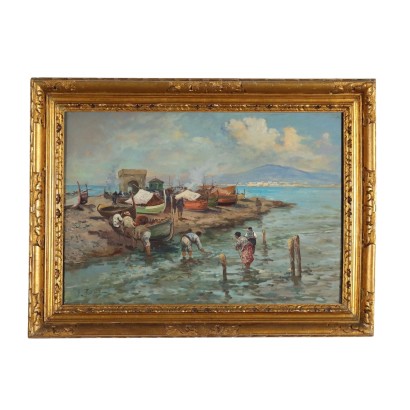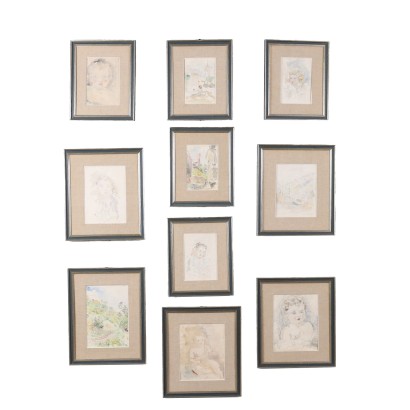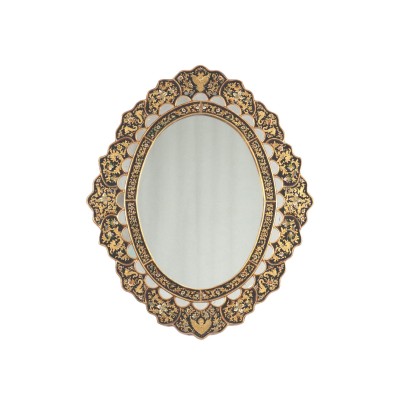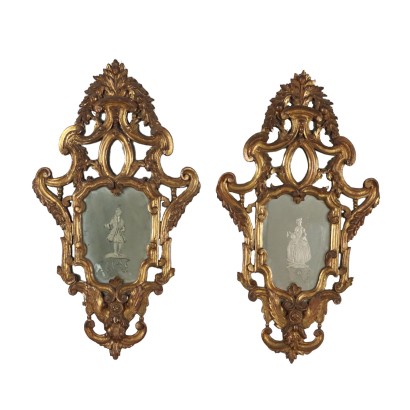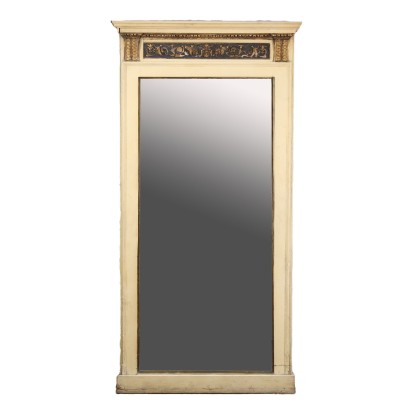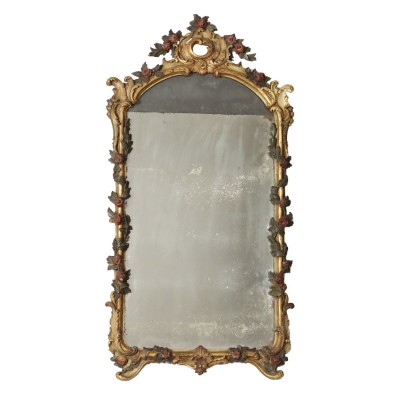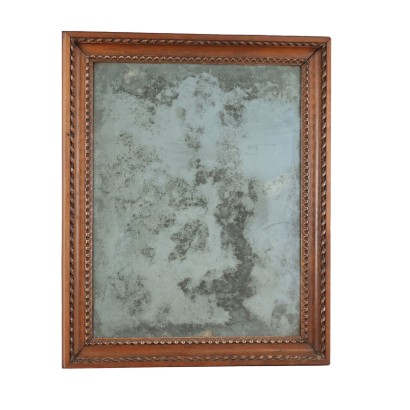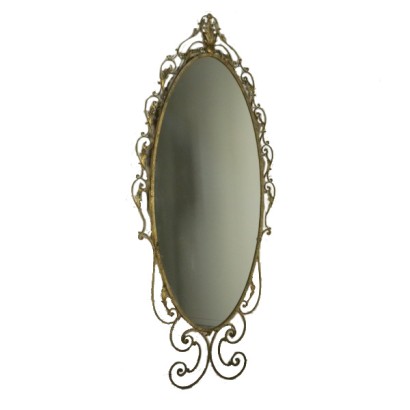F. Pratella Attr. Oil on Canvas Italy XX Century - Glimpse of the Sea with Fishermen
Features
Glimpse of the Sea with Fishermen
Artist: Fausto Pratella (1886-1964) Attributable to
Artwork title: Scorcio marino con pescatori
Age: 20th Century / 1901 - 2000
Subject: Marine Landscape
Origin: Italy
Artistic technique: Painting
Technical specification: Oil on Canvas
Description : Scorcio marino con pescatori
Oil painting on canvas. Signed F. Pratella on the lower left. In the Gulf of Naples, identifiable by the Vesuvius in the background, on a sandy stretch of coast a group of fishermen with their women pull the boats ashore. Light and colors fill the atmosphere of the scene. The Neapolitan artist Fausto Pratella, son of Attilio, initially followed his father's leave, painting marine full of light and movement, like the one proposed here, but soon wanted to depart from Attilio's wake, choosing different subjects and techniques, which led him to paint the cold peripheral parks of Milan, bringing in his canvases the evocative visions of those greens, those grays, those browns saturated with that humid and foggy vapidity typically Lombard. The painting is presented in a styled frame.
Product Condition:
Product in very good condition which may show slight traces of wear; it may have undergone restoration work carried out by an expert.
Frame Size (cm):
Height: 65
Width: 87
Depth: 7
Artwork dimensions (cm):
Height: 50
Width: 70
Additional Information
Artist: Fausto Pratella (1886-1964)
Born in Naples, son of the well-known painter Attilio, Fausto Pratella trained at the Academy of Fine Arts in his hometown, making his debut at a very young age in the pictorial manifestations of the city. Initially inspired by his father's production, he ventured into "marine" rich in colors and light, but soon, taking advantage of the stimuli of his own individual resources, Fausto Pratella was not slow to show, among the immediate currents of the young generation, not only the ability of an artist open to the most coveted evolutionary principles, but the talent of an eclectic and instinctive character.After the First World War in which he actively participated reporting the impairment of health, on the push towards ideation and research in art, he chose to move to Milan , where he worked for about twenty years, penetrating into the cold peripheral parks of Milan and bringing in his canvases the suggestive visions of those greens, those grays, those browns saturated with that humid and foggy vapidity typically Lombard. The works of this period, almost all developed in large dimensions, ensured him considerable prestige in the high spheres of Milanese art, during the national and international events in which he participated. The works of this period, almost all developed - contrary to those of his father Attilio - in large dimensions, ensured him considerable prestige in the high spheres of Milanese art, during the national and international events in which he participated. The works of this period, almost all developed - contrary to those of his father Attilio - in large dimensions, ensured him considerable prestige in the high spheres of Milanese art, during the national and international events in which he participated. His health deteriorated considerably, Fausto Pratella returned to Naples, settling in Capri where he hoped to benefit from the climate, but when he was not yet sixty he died in his father's house.
Age: 20th Century / 1901 - 2000
20th Century / 1901 - 2000
Subject: Marine Landscape
Artistic technique: Painting
La pittura è l'arte che consiste nell'applicare dei pigmenti a un supporto come la carta, la tela, la seta, la ceramica, il legno, il vetro o un muro. Essendo i pigmenti essenzialmente solidi, è necessario utilizzare un legante, che li porti a uno stadio liquido, più fluido o più denso, e un collante, che permetta l'adesione duratura al supporto. Chi dipinge è detto pittore o pittrice. Il risultato è un'immagine che, a seconda delle intenzioni dell'autore, esprime la sua percezione del mondo o una libera associazione di forme o un qualsiasi altro significato, a seconda della sua creatività, del suo gusto estetico e di quello della società di cui fa parte.
Technical specification: Oil on Canvas
The oil painting is a painting technique using powder pigments mixed with bases in inert and oils. Other customers have searched:



